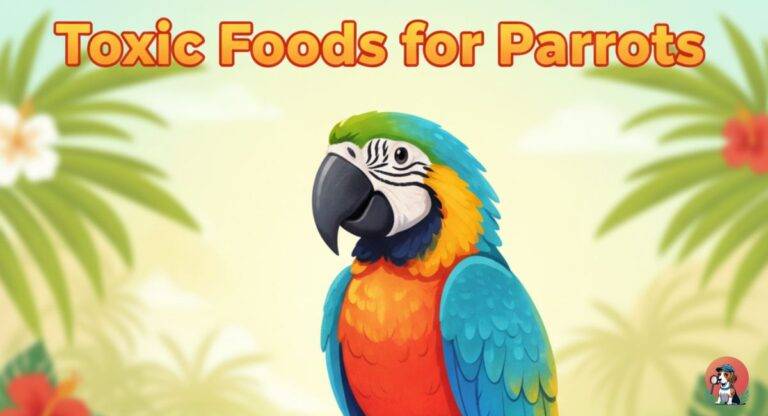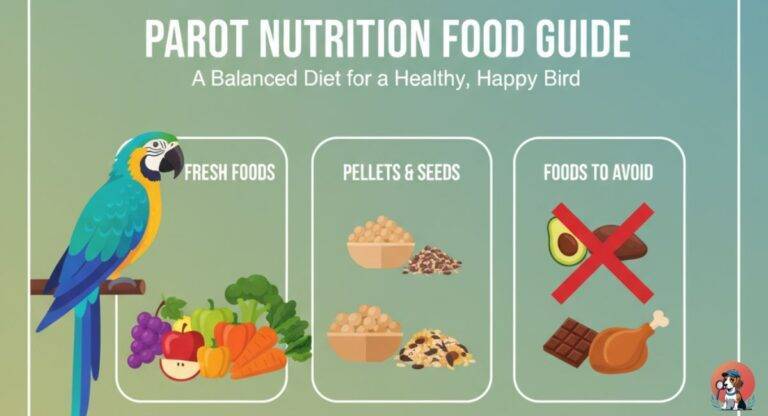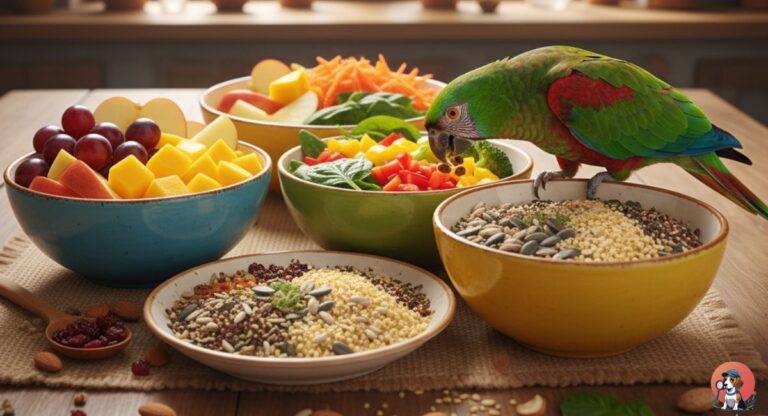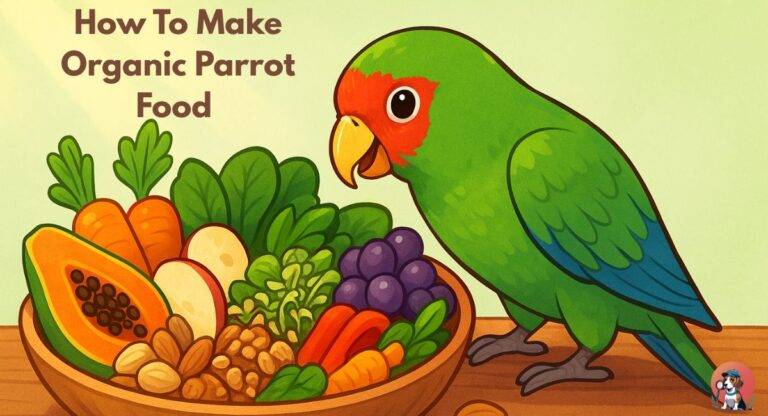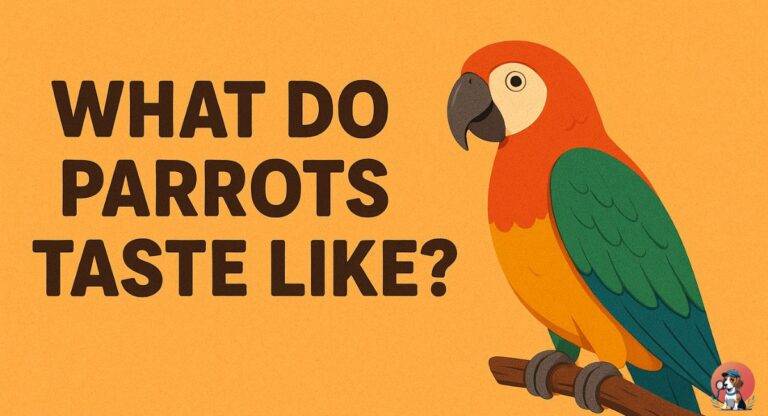What do parrots eat is one of the most important questions for any bird owner, pet parent, or avian enthusiast. Parrots are not just colorful creatures; they are intelligent, social, and sensitive, and their health is directly tied to diet. Many new owners assume seeds are enough, but in truth, a varied menu is essential. If you have ever watched your bird nibbling on fruit or begging for your snack, you have probably wondered, Am I feeding the right foods? Knowing what do parrots eat helps prevent illness, keeps feathers glossy, and makes your parrot more active and affectionate. This guide is designed to answer your curiosity and give you confidence in feeding your feathered companion.
What do parrots eat in the wild is a mix of seeds, fruits, nuts, blossoms, and even clay, which balances toxins. In captivity, parrots depend on you, and that’s why learning proper nutrition is critical. The promise of this guide is clear: by the end, you’ll understand the role of vegetables, grains, proteins, and safe fruits, as well as how to avoid harmful foods. You’ll also explore homemade parrot food recipes, tips for making organic meals, and a structured parrot nutrition food guide. When you know exactly what do parrots eat, you’ll see changes, brighter feathers, better moods, and stronger immunity. With every meal, you’re not just feeding; you’re nurturing life.
What do parrots eat is more than a dietary question; it’s the foundation of trust and companionship. A balanced diet affects behavior, intelligence, and bonding moments. The reason to read further is simple: when you master what do parrots eat, you protect your bird from toxic foods, ensure variety, and build a diet that mirrors nature. This guide covers everything from species-specific diets to seasonal feeding and even unusual curiosities like what do parrots eat in different environments.
1: Understanding Natural Diets – What Parrots Eat in the Wild
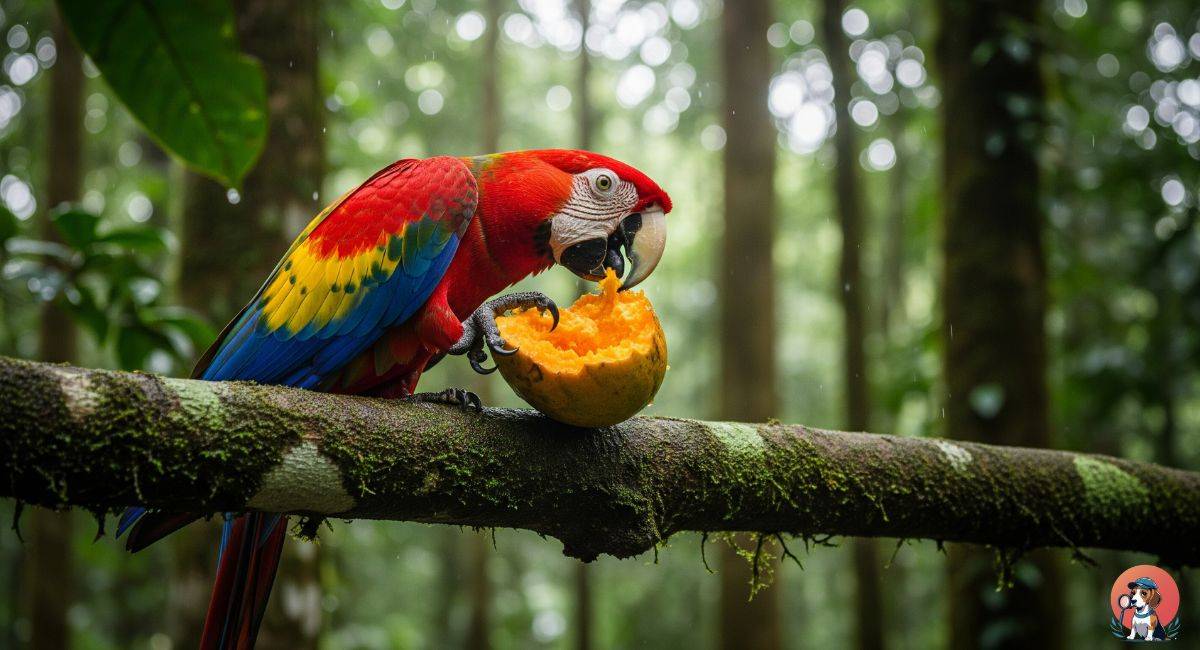
When asking what do parrots eat in their natural habitats, the answer is far more diverse than a bowl of seeds. Wild parrots are skilled foragers, spending hours each day searching for foods that provide balanced nutrition. Their diets are species-specific but share common patterns: seeds, nuts, fruits, leaves, and even clay. This natural variety prevents deficiencies, supports vibrant feather growth, and helps parrots live long, healthy lives. Understanding wild diets allows owners to replicate those choices at home, keeping pet parrots mentally engaged and physically nourished.
Why Wild Diets Matter for Pet Parrots
In the wild, parrots select foods instinctively. Pet parrots, however, rely entirely on what owners provide. By mimicking their wild diets, you reduce the risks of boredom, malnutrition, and behavioral problems.
Natural Foods Wild Parrots Rely On:
- Seeds from local plants and grasses
- Tropical fruits such as mango, papaya, and guava
- Berries are loaded with antioxidants
- Protein-packed nuts and kernels
- Blossoms and nectar for natural sugars
- Leafy greens and herbs
- Grains from wild crops
- Clay and soil for minerals
- Occasional insects or larvae
- Tree bark and shoots
2: Why Balanced Nutrition is the Key to Healthy Parrots
Parrots need carefully balanced meals to stay energetic, intelligent, and disease-free. Simply knowing what do parrots eat isn’t enough; it’s about ensuring proteins, healthy fats, carbohydrates, vitamins, and minerals are delivered in the right proportions. A diet lacking variety can lead to obesity, dull feathers, and weakened immunity. By following a balanced plan, you ensure your parrot thrives emotionally and physically.
Components of Balanced Diets
What do parrots eat? Balanced nutrition improves behavior, strengthens bones, and supports longer lifespans. Just like humans, parrots require food diversity daily.
Benefits of Balanced Nutrition:
- Strong immune system defense
- Brighter and healthier feathers
- Improved digestion and metabolism
- Longer lifespan with fewer illnesses
- Reduced stress and aggressive behaviors
- Healthy weight control
- Energetic play and activity
- Strong bones and beak health
- Prevention of malnutrition
- Happier bonding moments with owners
3: Common Mistakes Owners Make in Feeding Parrots
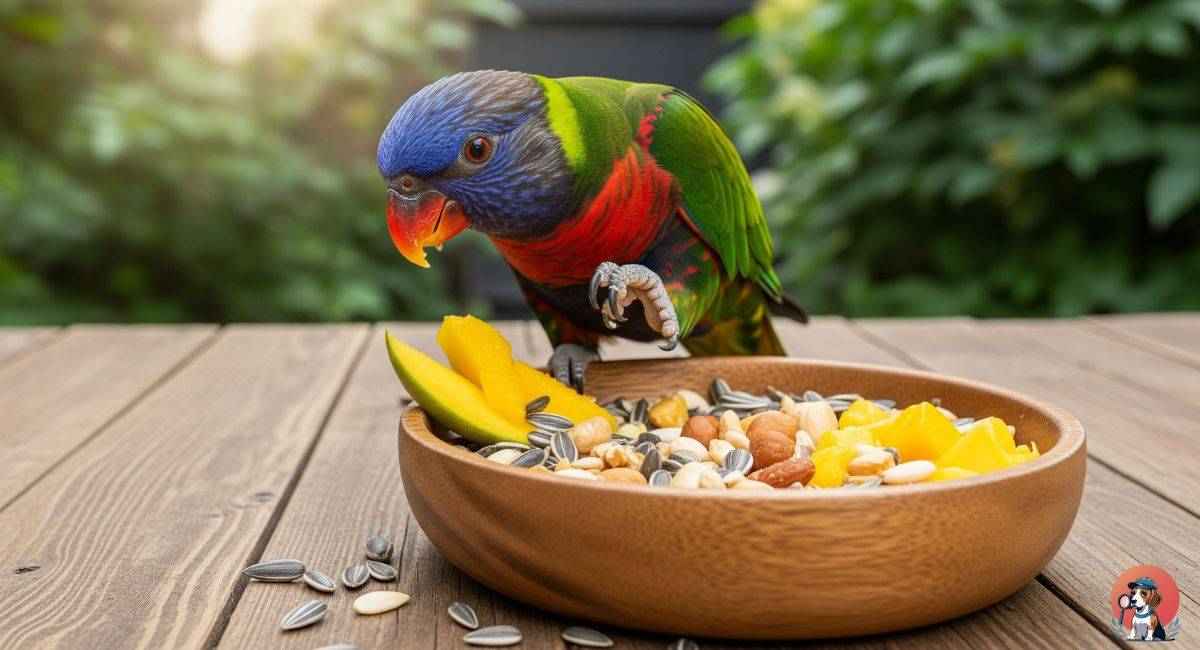
Many new owners misunderstand what do parrots eat, leading to mistakes that harm their pets. Feeding only seeds, giving processed snacks, or skipping vegetables can result in serious health problems. Parrots require a structured diet with safe ingredients and constant variety. Recognizing these mistakes ensures owners provide nourishment instead of accidental harm.
Avoiding Harmful Habits
Common feeding errors are easy to correct once identified. Awareness is the first step to preventing malnutrition.
Mistakes to Avoid:
- Feeding only seeds daily
- Giving salty or sugary human snacks
- Offering processed or fried foods
- Ignoring the importance of fresh vegetables
- Forgetting calcium-rich sources
- Overfeeding fatty nuts
- Skipping pellet-based nutrition
- Allowing spoiled or moldy foods
- Giving chocolate, caffeine, or avocado
- Not rotating food variety
4: Parrot Nutrition Food Guide – The Ultimate Daily Chart
A parrot nutrition food guide answers the question, What do parrots eat every day for balance? This guide ensures owners provide the right proportions of fruits, vegetables, grains, nuts, and pellets. Following a daily chart prevents overfeeding, avoids monotony, and keeps parrots strong.
Building a Daily Meal Plan
Different parrot species may have unique needs, but this general chart works as a foundation for balanced meals.
Daily Food Essentials:
- 40% fresh vegetables
- 20% fresh fruits
- 20% pellets (fortified, species-appropriate)
- 10% nuts and seeds
- 5% grains and legumes
- 5% occasional treats
- Fresh water daily
- Mineral block or cuttlebone
- Occasional sprouts and herbs
- Safe, toxin-free food preparation
5: Safe Fruits and Vegetables Parrots Love
To fully understand what do parrots eat, owners must learn which fruits and vegetables are safe. Fresh produce is vital because it provides hydration, vitamins, and antioxidants. Rotating fruits and vegetables prevents nutritional gaps while making meals exciting.
Colorful Choices for Daily Rotation
Offer a rainbow of produce to maximize nutrients and improve feather vibrancy.
Parrot-Safe Produce List:
- Apples (without seeds)
- Carrots for vitamin A
- Broccoli for calcium
- Spinach in moderation
- Berries are rich in antioxidants
- Bell peppers for vitamin C
- Mango and papaya for enzymes
- Oranges in small portions
- Cucumbers for hydration
- Zucchini and squash
6: Homemade Parrot Food Recipes That Work
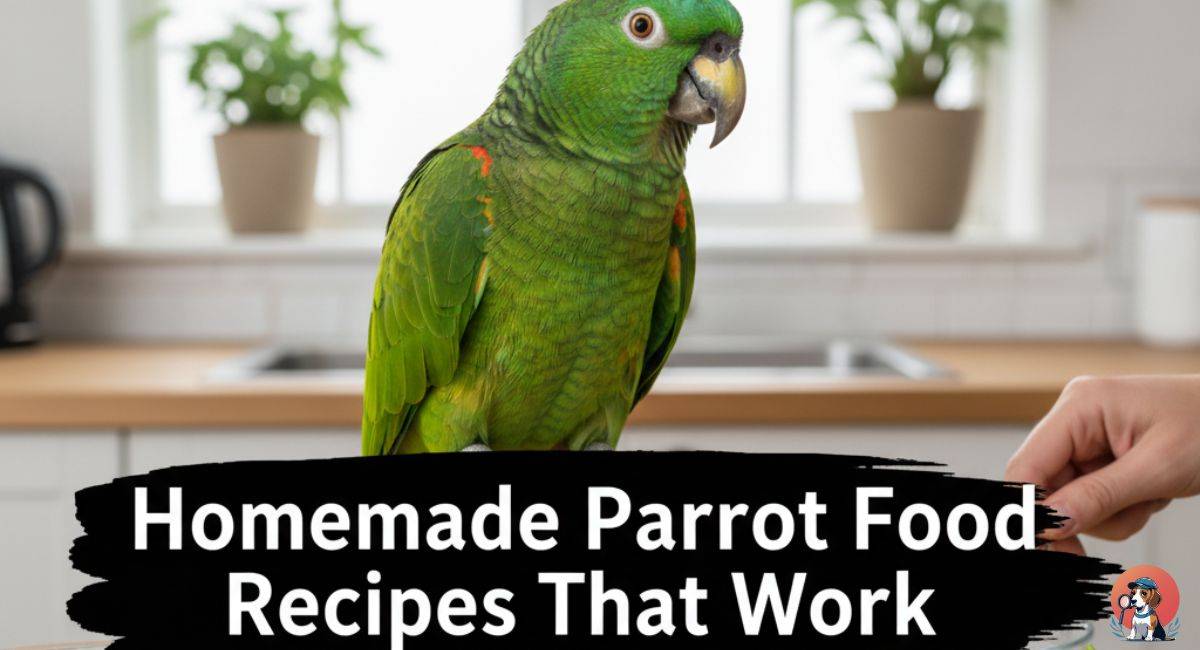
Many owners ask not only what do parrots eat but also how to prepare fresh meals at home. Homemade parrot food recipes ensure freshness, eliminate preservatives, and allow owners to customize meals for species-specific needs. These recipes are simple, healthy, and cost-effective.
Simple Kitchen Creations
Homemade meals keep parrots entertained and prevent diet monotony.
Easy Homemade Recipes:
- Mixed vegetable chop with leafy greens
- Fruit salad with mango, papaya, and apples
- Cooked quinoa with chopped carrots and peas
- Brown rice with spinach and herbs
- Oatmeal with blueberries (unsweetened)
- Sprouted lentils and chickpeas
- Baked sweet potato cubes
- Nut and seed energy balls (no salt/sugar)
- Whole-grain pasta with broccoli
- Herbal tea-infused water (safe blends only)
7: How to Make Organic Parrot Food at Home
Owners committed to natural diets often wonder how to make organic parrot food safely. Organic feeding reduces chemical exposure and ensures parrots receive only the cleanest ingredients. By preparing organic meals, you control freshness, avoid GMOs, and mimic wild nutrition.
Preparing Organic Meals
Choosing organic options requires careful sourcing but delivers healthier results long term.
Organic Food Prep Tips:
- Always choose pesticide-free produce
- Wash fruits/vegetables thoroughly
- Buy certified organic grains
- Avoid GMO seeds/nuts
- Prepare in glass/stainless containers
- Use safe, filtered water
- Store meals in airtight jars
- Rotate recipes weekly
- Grow herbs like basil and parsley at home
- Avoid processed oils and additives
8: Toxic Foods for Parrots You Must Avoid
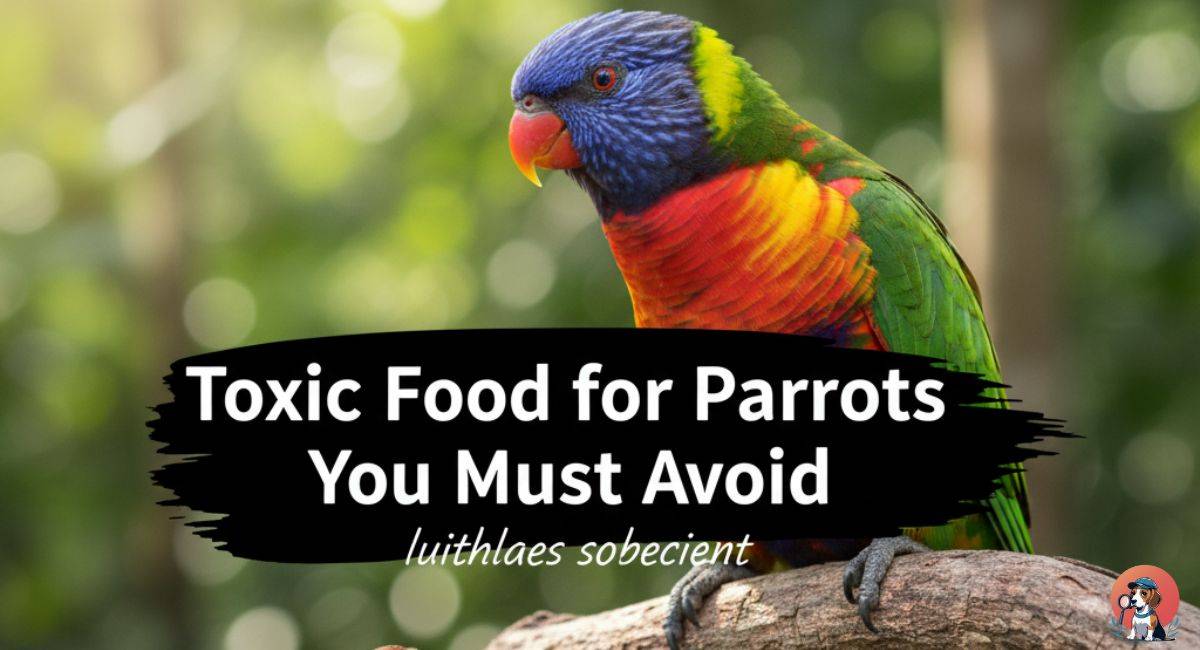
Knowing what do parrots eat also means learning what they must never eat. Even tiny amounts of toxic foods for parrots can harm parrots’ nervous systems, digestion, or organs. Owners must stay vigilant and keep dangerous items away at all times.
Dangerous Foods to Eliminate
Avoid these foods permanently to protect your parrot’s health.
Foods Toxic to Parrots:
- Avocado
- Chocolate
- Caffeine (tea, coffee, soda)
- Alcohol
- Onions and garlic
- Raw beans (kidney, lima, etc.)
- Apple seeds and fruit pits
- Salty chips or processed snacks
- Dairy products
- Fried and oily foods
9: What Do Parrots Taste Like – A Curious Question
Curiosity sometimes leads people to ask what do parrots taste like, not with the intent to eat them, but to understand how diet affects biology. Historically, parrots were occasionally consumed, described as tough and gamey. Today, ethical awareness highlights parrots as companions, not meals. Their diets affect their flesh, feathers, and overall biology, but their true purpose is companionship.
Why This Question Matters
The curiosity emphasizes conservation, ethical treatment, and dietary importance.
Key Points to Note:
- Some cultures historically consumed parrots
- Described as gamey, tough meat
- Ethical concerns now dominate
- Parrots are a protected species in many countries
- Their diet affects their body composition
- Taste varies by species
- Not recommended for ethical reasons
- Raises awareness of conservation needs
- Highlights the importance of diet in biology
- Reminder: parrots are companions, not food
10: Species-Specific Diet Needs
Owners often ask what do parrots eat, but the answer changes with species. Each type of parrot has unique preferences and nutritional demands. Researching species-specific diets ensures health, longevity, and better behavior.
Tailoring Meals for Parrot Types
Different parrots thrive on different food balances.
Species Diet Notes:
- African Grey: High in vitamin A and calcium
- Macaws: Need more nuts and healthy fats
- Cockatoos: Lower-fat diet to prevent obesity
- Amazons: Thrive on vegetables, limited fruit
- Budgies: Seeds, pellets, leafy greens
- Conures: Mix of fruits and grains
- Eclectus: Rich in beta-carotene foods
- Quakers: Balanced pellets and fresh veggies
- Lovebirds: Small fruit portions, avoid excess fat
- Parakeets: Millet, leafy greens, pellets
11: Seasonal Feeding for Parrots
Seasonal availability influences what do parrots eat in the wild. Mimicking these patterns keeps captive parrots mentally stimulated and nutritionally balanced. Feeding seasonally also supports freshness and reduces reliance on imported foods.
Adjusting Diets by Season
Rotate foods with natural cycles for better enrichment.
Seasonal Feeding Tips:
- Spring: Fresh sprouts and leafy greens
- Summer: Hydrating fruits like melons
- Autumn: Root vegetables, squash
- Winter: Warm grains, cooked legumes
- Rotate food with market availability
- Avoid out-of-season imports with chemicals
- Mimic natural cycles for health
- Seasonal herbs for enrichment
- Adjust calorie intake by the weather
- Always keep fresh water
12: How Feeding Habits Impact Parrot Behavior
Finally, diet influences not just health but also behavior. Owners asking what do parrots eat often discover mood, talkativeness, and bonding depending on food choices. Poor diets cause aggression and feather plucking, while balanced meals foster calm, happy birds.
Diet-Behavior Connection
Food choices directly shape personality and daily energy.
Behavior Links to Diet:
- Seeds only → boredom, plucking
- Fresh fruits → energetic play
- Vegetables → brighter feathers
- Nuts → bonding treat
- Pellets → steady energy
- Overfeeding fat → laziness
- Junk food → aggression
- Calcium-rich foods → calmer nature
- Variety → mental stimulation
- Treats during training → better learning
FAQs
Q1: What do parrots eat in the wild, and why is it important?
Parrots eat seeds, fruits, nuts, blossoms, and leafy greens in their natural environment. They even consume clay to balance toxins. Understanding what do parrots eat in the wild gives insight into building a healthy diet for pet parrots. Mimicking their natural feeding habits is essential for long-term health and energy.
Q2: What do parrots eat daily to stay healthy and active?
Parrots eat a balanced mix of pellets, vegetables, fruits, and small amounts of nuts or seeds each day. A good parrot nutrition food guide recommends 60% pellets, 20% veggies, 10% fruits, and 10% nuts. This ensures your parrot receives vitamins, proteins, and minerals for growth and strong immunity.
Q3: What do parrots eat as their favorite vegetables?
Parrots eat fresh vegetables like carrots, kale, spinach, bell peppers, broccoli, and sweet potatoes. These foods provide antioxidants, fiber, and calcium for strong bones and vibrant feathers. Offering colorful vegetables daily keeps parrots engaged and prevents nutritional deficiencies.
Q4: What do parrots eat when it comes to fruits?
Parrots eat fruits such as apples, mangoes, papayas, bananas, grapes, and berries. These are rich in natural sugars, vitamins, and hydration. Always remove seeds and pits before feeding. Including fruits regularly helps parrots stay energetic and improves feather brilliance.
Q5: What do parrots eat for natural protein sources?
Parrots eat protein-rich foods like cooked beans, lentils, peas, and quinoa. Some owners also offer scrambled or boiled eggs in small amounts. Protein helps parrots build muscle, maintain energy, and recover after molting. Balanced protein is vital for active and playful parrots.
Q6: What do parrots eat from homemade parrot food recipes?
Parrots eat healthy blends of cooked grains, chopped vegetables, beans, and fruits when prepared through homemade parrot food recipes. Meals like brown rice with peas, corn, and carrots make excellent fresh options. Homemade recipes avoid preservatives and provide fresher, nutrient-packed meals.
Q7: What do parrots eat when owners learn how to make organic parrot food?
Parrots eat safer meals when owners focus on how to make organic parrot food using pesticide-free vegetables, whole grains, and natural fruits. Organic feeding reduces toxins, boosts immunity, and helps prevent long-term health issues. It’s one of the best ways to ensure freshness.
Q8: What do parrots eat that should never be given to them?
Some foods are dangerous, and parrots must avoid avocado, chocolate, alcohol, caffeine, onions, garlic, salty snacks, and fried foods. These are toxic foods for parrots and can lead to organ damage or even death. Protecting them from unsafe foods is as important as feeding them healthy ones.
Q9: What do parrots eat to keep their feathers shiny and bright?
Parrots eat foods like flaxseeds, walnuts, leafy greens, carrots, and berries to maintain feather health. These foods are rich in omega-3, vitamin A, and antioxidants. A shiny feather coat is a direct reflection of a nutrient-rich, balanced diet.
Q10: What do parrots eat to live a long, healthy life?
Parrots eat a wide variety of foods—pellets, vegetables, fruits, and nuts—combined in balance. Avoiding unhealthy treats and following a parrot nutrition food guide extends their lifespan. A proper diet reduces the risks of disease and ensures happiness for years.
Q11: What do parrots eat that humans can also enjoy?
Parrots eat some of the same safe foods humans eat, including apples, bananas, corn, rice, and oats. While parrots can share some human foods, processed snacks, sugar, and salty items must always be avoided. Shared fresh meals strengthen bonding moments.
Q12: What do parrots eat when hand-fed by their owners?
Parrots eat soft foods like mashed bananas, soaked pellets, or cooked rice when hand-fed. Hand-feeding builds trust and strengthens the bird-owner relationship. However, it’s important to maintain variety so parrots still get the full benefits of balanced nutrition.
Q13: What do parrots eat during training and bonding sessions?
Parrots eat small treats such as sunflower seeds, almonds, or dried fruits during training. These treats motivate them and make learning fun. Treat-based rewards improve communication, help in teaching tricks, and build stronger emotional bonds.
Q14: What do parrots eat compared to what do parrots taste like in nature?
Parrots eat flavorful fruits, nuts, and seeds, which influence their natural body flavor. While asking what do parrots taste like may seem unusual, it highlights how diet impacts overall health and composition. Their plant-based meals create a naturally fruity or nutty profile.
Q15: What do parrots eat to avoid boredom and picky eating habits?
Parrots eat rotating meals of pellets, vegetables, fruits, and homemade parrot food recipes to stay excited about food. Changing textures and colors prevents boredom, reduces stress, and keeps them engaged. A varied diet makes parrots healthier and happier.
Conclusion
What do parrots eat is not just a question; it is the foundation of their health, longevity, and happiness. Parrots thrive on a balanced and diverse diet that includes fresh vegetables, colorful fruits, wholesome grains, protein-rich legumes, and carefully chosen nuts, all while avoiding harmful and toxic food for parrots. By following a clear parrot nutrition food guide, you ensure every meal supports their immune system, energy, and feather brilliance.
At the same time, exploring homemade parrot food recipes and learning how to make organic parrot food allows owners to add variety, freshness, and love to their birds’ meals. This not only keeps parrots engaged but also strengthens the bond of trust between bird and owner.
In the end, the real answer to what do parrots eat is simple: provide safe, nutrient-rich, and thoughtfully prepared foods that mirror their natural diet. When you make diet a priority, your parrot enjoys more than just food; they gain a life filled with vibrant energy, beautiful feathers, strong health, and lasting companionship.

